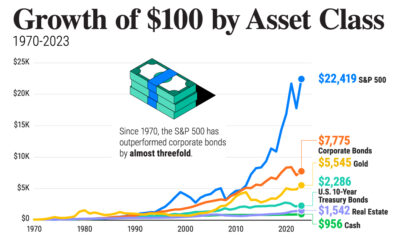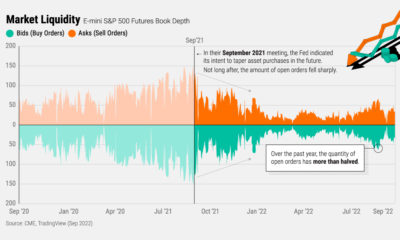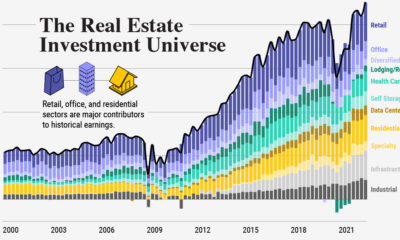This infographic is available as a poster.
Real Estate Return on Investment by Sector
For the ninth year in a row, Americans say real estate is the best long-term investment.
However, what might be less clear to the average investor are the different types of investments available within the real estate sector, and how they compare. Real estate return on investment within property sectors has historically been uneven, and 2021 was no exception. While residential property soared, office real estate has performed relatively poorly.
Are there any patterns in the top performers over time?
This Markets in a Minute from New York Life Investments ranks real estate return on investment by sector over the last decade.
Sector Returns Over Time
We used data from the National Association of Real Estate Investment Trusts to show real estate return on investment by year. A real estate investment trust is a company that owns, operates, or finances income-producing real estate.
Here’s how total returns stack up by property sector, sorted from highest to lowest return in 2021.
| 2012 | 2013 | 2014 | 2015 | 2016 | 2017 | 2018 | 2019 | 2020 | 2021 |
| Self Storage | 19.9% | 9.5% | 31.4% | 40.7% | -8.1% | 3.7% | 2.9% | 13.7% | 12.9% | 57.6% |
| Residential | 6.9% | -5.4% | 40.0% | 17.1% | 4.5% | 6.6% | 3.1% | 30.9% | -10.7% | 45.8% |
| Industrial | 31.3% | 7.4% | 21.0% | 2.6% | 30.7% | 20.6% | -2.5% | 48.7% | 12.2% | 45.4% |
| Retail | 26.7% | 1.9% | 27.6% | 4.6% | 1.0% | -4.8% | -5.0% | 10.7% | -25.2% | 41.9% |
| Diversified | 12.2% | 4.3% | 27.2% | -0.5% | 10.3% | -0.1% | -12.5% | 24.1% | -21.8% | 20.5% |
| Infrastructure | 29.9% | 4.8% | 20.2% | 3.7% | 10.0% | 35.4% | 7.0% | 42.0% | 7.3% | 18.6% |
| Timber | 37.1% | 7.9% | 8.6% | -7.0% | 8.3% | 21.9% | -32.0% | 42.0% | 10.3% | 16.4% |
| Mortgage | 19.9% | -2.0% | 17.9% | -8.9% | 22.9% | 19.8% | -2.5% | 21.3% | -18.8% | 14.7% |
| Office | 14.2% | 5.6% | 25.9% | 0.3% | 13.2% | 5.3% | -14.5% | 31.4% | -18.4% | 13.4% |
| Healthcare | 20.4% | -7.1% | 33.3% | -7.3% | 6.4% | 0.9% | 7.6% | 21.2% | -9.9% | 7.7% |
| Lodging/Resorts | 12.5% | 27.2% | 32.5% | -24.4% | 24.3% | 7.2% | -12.8% | 15.7% | -23.6% | 6.3% |
Data for 2021 is as of November 30. Specialty and data center sectors are excluded as this data was only available from 2015 onwards.
Self Storage real estate was the best performing sector for the last two years, and also performed well during the 2015 market correction. It tends to perform well when people’s lives are disrupted, such as when they’re moving for a new job, schooling, or due to marriage or divorce. In the case of COVID-19, self storage got an extra boost from people wanting more space in their home amid remote work.
Timber and Industrial real estate have been in the top three performing sectors for at least half of the last decade. Industrial real estate, a category including properties that enable the production, storage, and distribution of goods, has seen increased demand due to the rise of e-commerce. One estimate says the U.S. could require an extra billion square feet of warehouse space by 2025.
On the other hand, the Lodging/Resort sector has frequently been one of the bottom performers. A form of discretionary spending, hotel stays may be one of the first expenses people cut when the economy is in a downturn. This weakness was compounded by lockdown restrictions during the COVID-19 pandemic.
What is a Good Return on Investment in Real Estate?
In light of the above data, investors may be wondering which sectors are “the best” to invest in.
The short answer: it depends. Here’s how real estate return on investment has varied within sectors, using the minimum, median, and maximum returns. We’ve sorted the data from the highest to lowest standard deviation, a measure of risk.

While Timber and Self Storage have delivered strong returns, they have also been relatively risky, with some of the widest variations in returns.
Industrials have seen the highest median return, and their risk is about middle of the pack. The second highest median return goes to the Mortgage sector, which earns income from the interest on mortgages and mortgage-backed securities. The mortgage sector has seen less risk than most other real estate categories, at least in the last decade.
For investors with a lower risk tolerance, Infrastructure may be a sector to consider. These properties had a positive return on investment for all of the last 10 years, and had the lowest risk of any property sector.
Patterns Within Real Estate Return on Investment
By looking at historical patterns, investors can consider how economic conditions may affect real estate return on investment.
Sectors associated with discretionary spending, such as Retail and Lodging, have tended to perform poorly during downturns. On the other hand, Self Storage and Residential properties have historically been more resilient during the 2015 selloff and the COVID-19 pandemic.
Future trends may also offer food for thought. For example, as the population ages and the government puts an increased focus on critical facilities, could the Healthcare and Infrastructure sectors be poised for growth?
Whichever sector(s) an investor focuses in on, real estate serves as an alternative investment that can help diversify any portfolio.

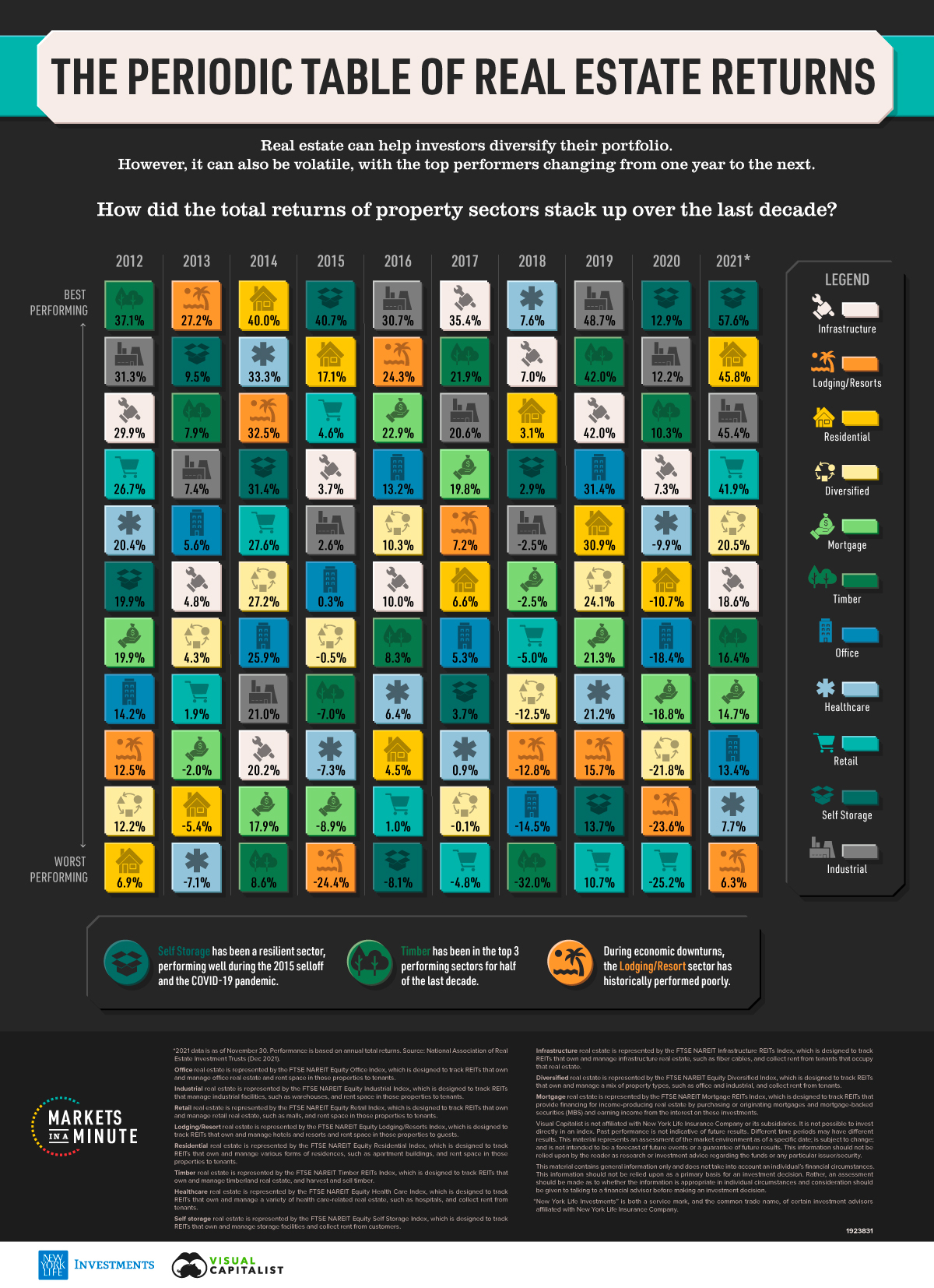
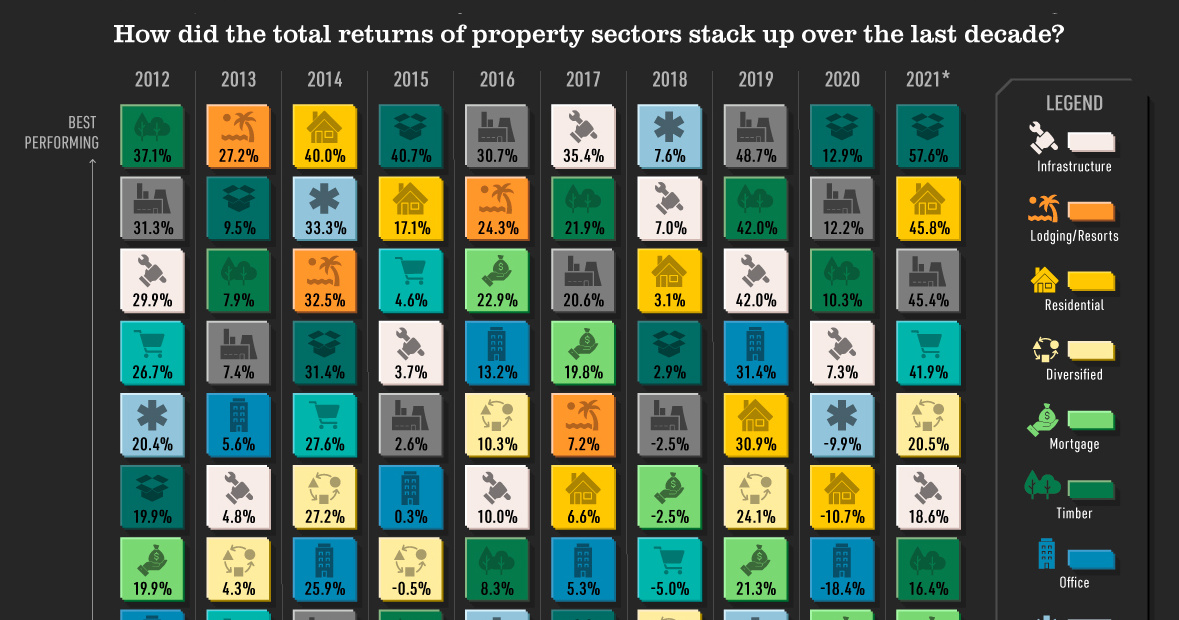

 Infographics2 years ago
Infographics2 years ago
 Markets in a Minute2 years ago
Markets in a Minute2 years ago
 Markets in a Minute2 years ago
Markets in a Minute2 years ago
 Infographics2 years ago
Infographics2 years ago
 Markets in a Minute1 year ago
Markets in a Minute1 year ago
 Infographics3 years ago
Infographics3 years ago
 Markets in a Minute2 years ago
Markets in a Minute2 years ago
 Infographics1 year ago
Infographics1 year ago


